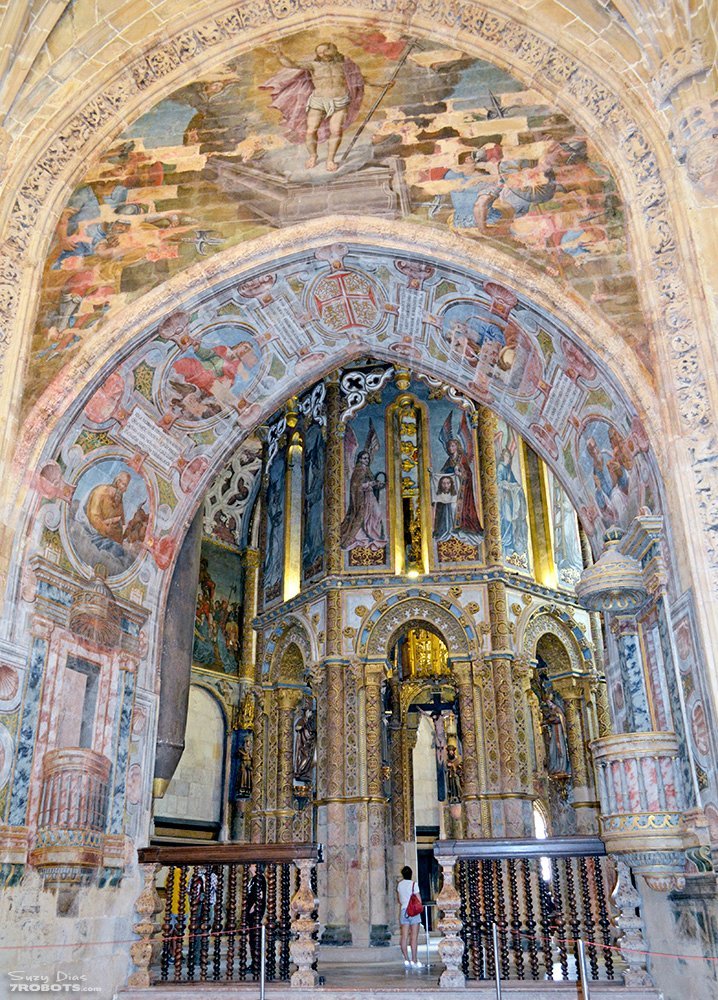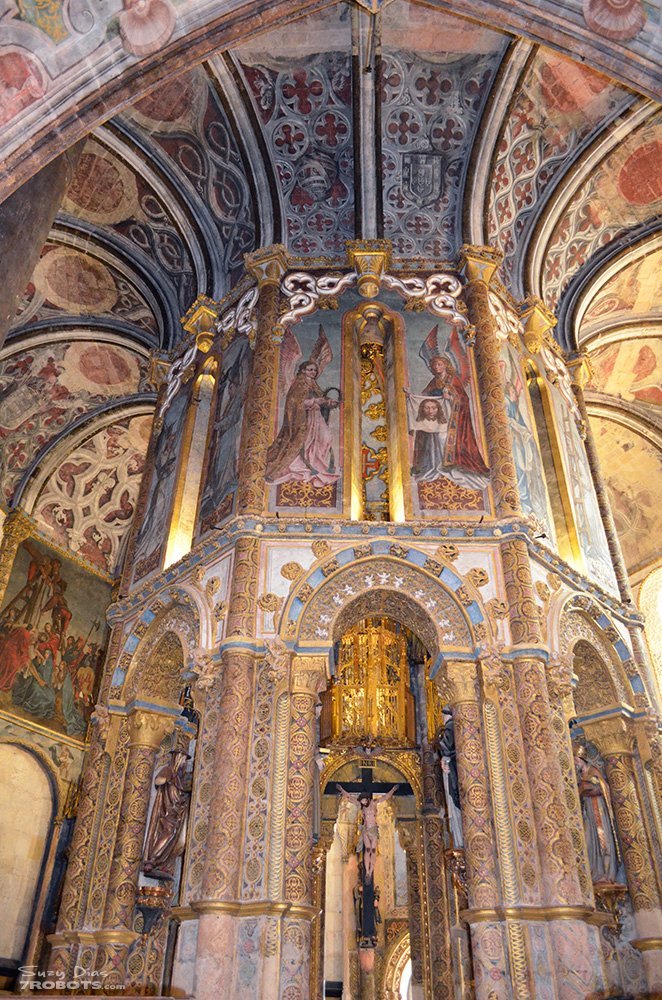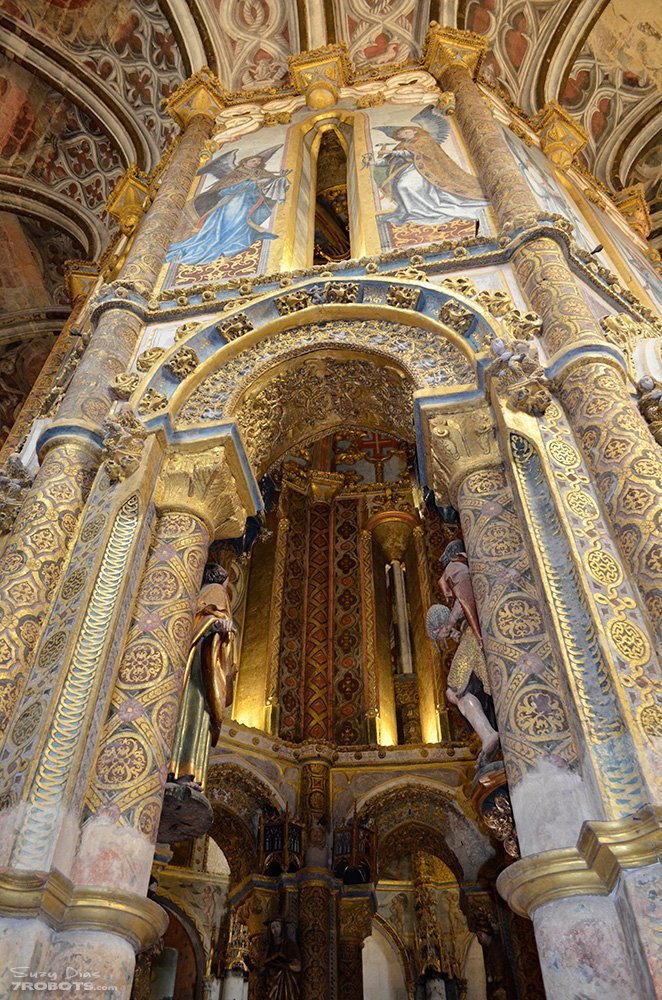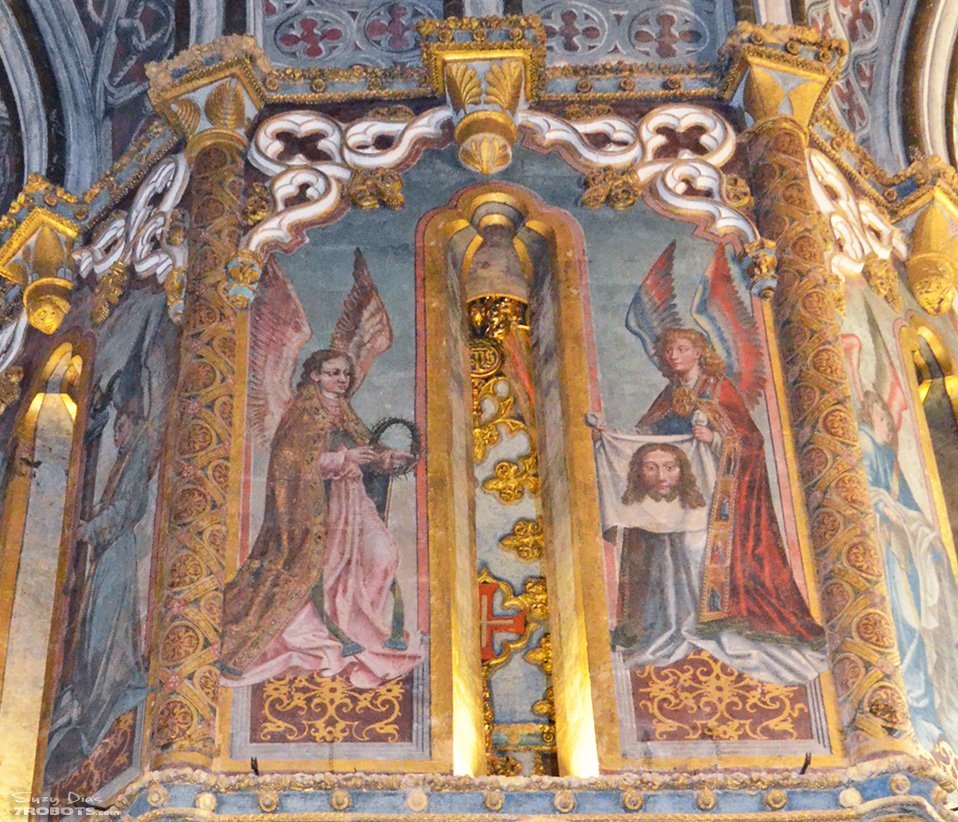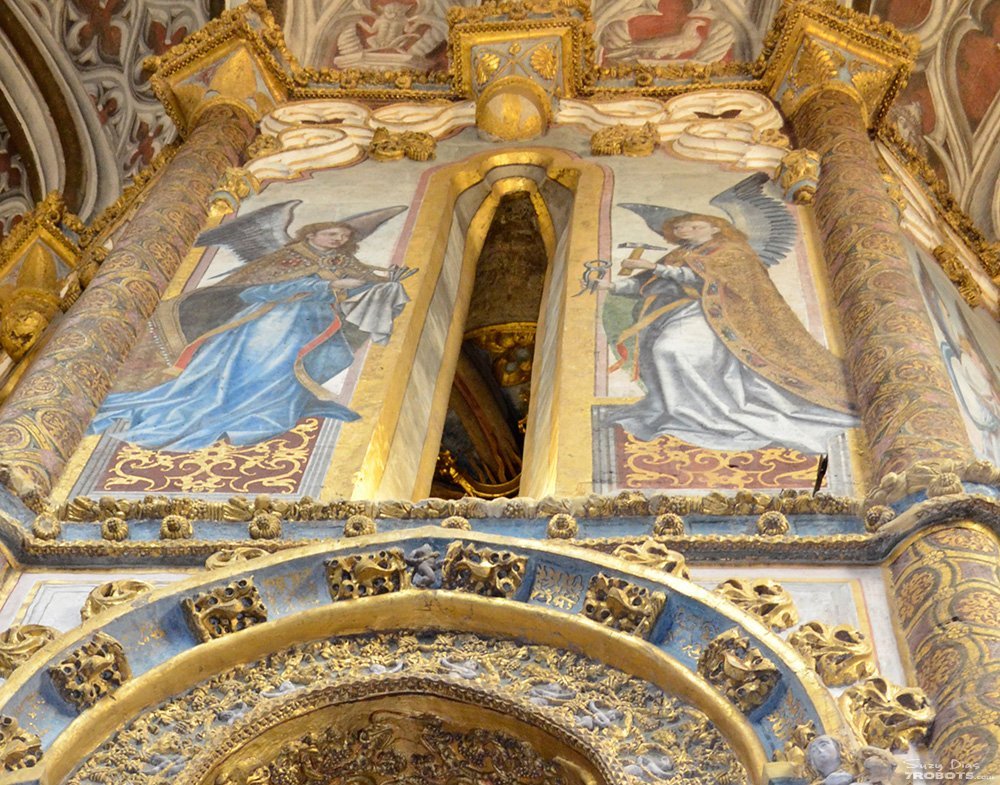Templar Symbols at the Rotunda (Charola)
The Rotunda Charola do Convento de Cristo was built by the Knights Templar. It’s hard to describe this masterpiece created in the 12th century as a church within the convent. The Rotunda or Round Church was inspired by the Holy Sepulchre Rotunda in Jerusalem. which the crusaders believed was a remnant of the Temple of Solomon.
There is so much art and architecture packed into such a small space that the effect is stunning. I found the roundness quite unique for a Catholic church. It didn’t have the usual church format of people looking towards a central point at the front (an altar). This description is taken from Unesco:
“Built over the span of five centuries, the Convent of Christ is a testimony to an architecture combining Romanesque, Gothic, Manueline, Renaissance, Mannerist and Baroque elements. The Convent’s centrepiece is its 12th century rotunda, Oratory of the Templars, influenced by Jerusalem’s Holy Sepulchre Rotunda. It was built by the first great master of the Templars, Gualdim Pais, and was based on a polygonal ground plan of 16 bays including an octagonal choir with ambulatory: this is one of the typical “rotondas” of Templar architecture of which few examples are still extant in Europe. In 1356, the Convent became the home of the Order of Christ in Portugal and the rotunda’s decoration reflects the Order’s wealth. The paintings and frescos depicting mainly 16th century biblical scenes, as well as the gilt statuary under the Byzantine dome were carefully restored. When the Manueline church was built, it was connected to the rotunda by an arcade” [click here to read more].
★ For more photos and posts on Portugal, including more about Tomar click here.
Rotunda Design
Interior of the Rotunda is decorated with late Gothic painting and sculpture. From the outside the church is a 16-side polygonal structure, with strong buttresses, round windows and a bell-tower. From the inside the round church has a central, octagonal structure, connected by arches to a surrounding “walking place” or ambulatory.
Rotunda Paintings
“The mural paintings from the central drum, as well as the ones around the Rotunda, were painted directly on the carved limestone surface without any type of plaster ground. This refers specifically to the absence of layers of lime mortars that are applied in order to soften the irregularities of the masonry, thus creating a compact and smooth surface to receive the painting. By raking light, the grooves left by cutting tools, the stonemasons’ marks and all the irregularities of the rocky surface are clearly visible (Figure 3). The only existing mortars are the ones found in the stone joints. In general, these are uneven, showing that they were applied in a coarse way, without major concerns in terms of texture and final appearance” [click here to read more].
View when you first walk into the Rotunda. The Crucifix is visible through the archway and angels above, perhaps showing that once he died, his soul rose to the next level.
View from behind the crucified Jesus, looking towards the beautiful Round Window (janela redonda). Below the round window is the famous Chapter House Window made by Diogo de Arruda in 1510-1513.(shown in a separate post).
Don’t forget to look up.
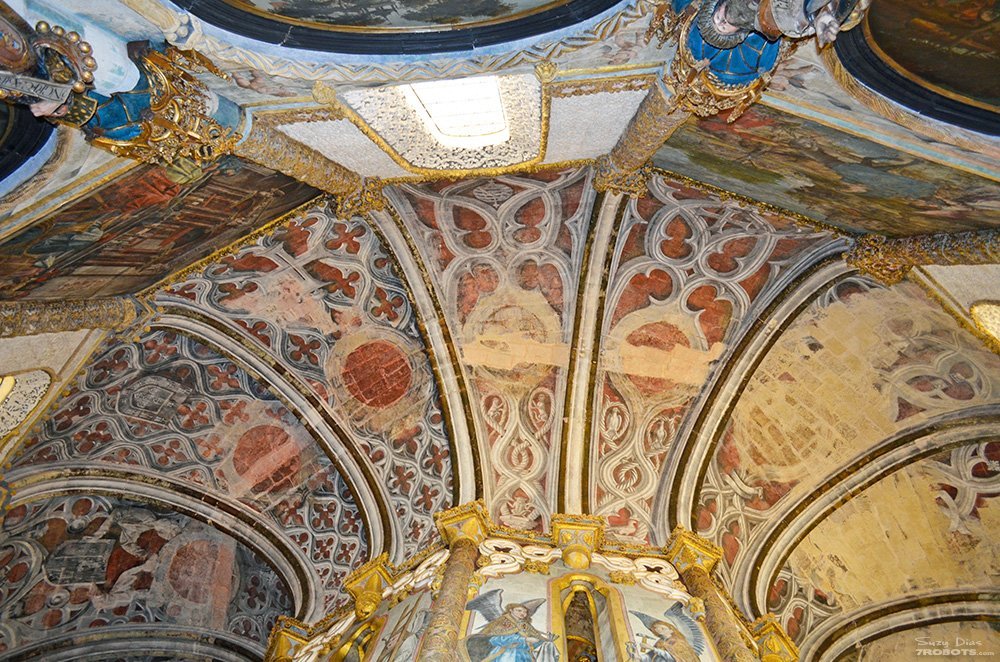
Angels in the Rotunda
Around the central drum are a series of angels in various scenes. This one depicts an angel holding the image of Jesus on the his burial cloth and the other holding the crown of thorns.
Silêncio e Segredo
Pintural parietal (século XVI) do Silêncio e Segredo na Charola ou Rotunda do Convento de Cristo, Tomar. In other words the 16th century painting called, Silence and Secret or perhaps Silent and Secret.
Here’s a closer look at Silêncio e Segredo.
The Rotunda’s Beautiful Paintings
Founder of Tomar: Gualdim Pais fourth grand master of the Knights Templar
Gualdim Pais (1118 – 1195) was a Portuguese crusader and the fourth grand master of the Knights Templar. He was in the service of the first King of Portugal, Afonso Henriques. In 1159, after the conquest of the region from the Moors in the Portuguese Reconquista, the land was granted to the Order of the Knights Templar as a fief or fee for services.
Gualdim Pais is the founder of the city of Tomar. In 1160 he began construction of the Convento de Cristo, what would later become the headquarters of the Order or Christ in Portugal.
Templars re-established in Portugal in 14th century
In 1307, Pope Clement V had many of the members of the Knights Templar in France arrested, tortured into giving false confessions, and burned at the stake. King Philip IV of France disbanded the Order in 1312. In 1314, under the pressure from Pope Clement V, the Templars were banned through Europe.
Much of what you may have read about the Knights Templar is focused on France and perhaps the UK, but the last great chapter in their history was written in Portugal.
In 1319, King Dinis of Portugal persuaded Pope John XXII to allow fugitive Templars to join, with their possessions, the newly created Order of Christ.
Related Links
★ More Posts on Tomar and Portugal
★ UNESCO: Convent of Christ in Tomar
★ Historical figures involved with the Convent of Christ
★ Templários, os Guardiões da “Terra Santa” – Por Vitor Manuel Adrião
